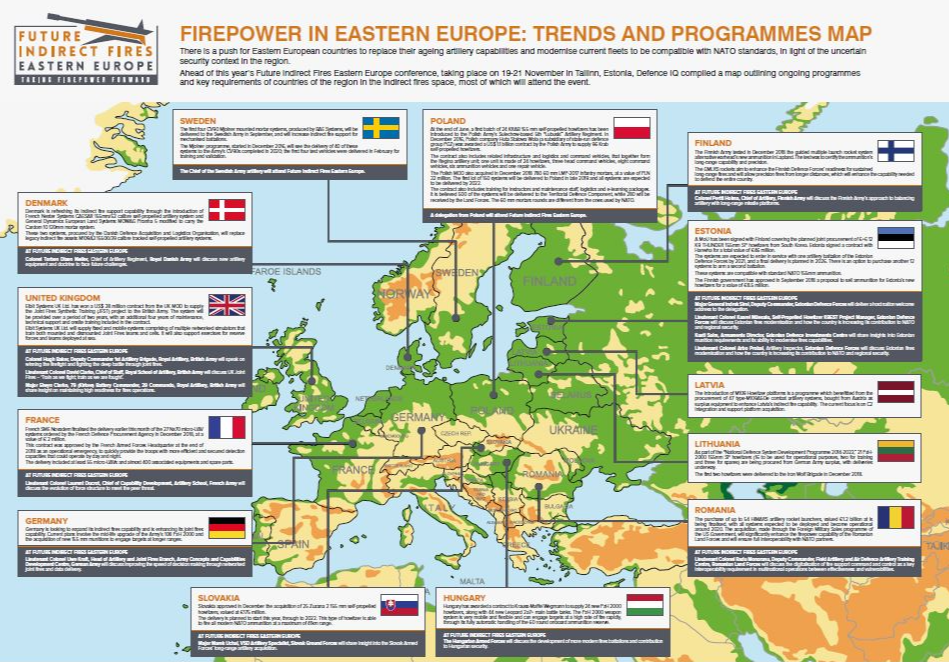Featured Content - Articles, Reports, Interviews

Future Indirect Fires Eastern Europe Agenda 2023
Future Indirect Fires Eastern Europe will look at ways to strengthen NATO’s collective defence readiness and allied presence on the eastern flank and brings together the artillery community, from military capability developers and operational users to industry experts drawn from across the artillery ecosystem to address the challenges in the region.
>> Download the full programme here


Firepower in Eastern Europe: Trends and programmes map
In light of the uncertain security context of the region, the push for Eastern European countries to replace their ageing artillery capabilities and modernise current fleets is highlighted by a lot of acquisition activity. The focus is primarily on procuring systems compatible with NATO standards, and ones that enable a longer range target engagement.
Ahead of this year’s Future Indirect Fires Eastern Europe, Defence IQ compiled a map featuring updates on current programmes, key procurement plans and requirements for future acquisitions of the region.
Download the map now >>

Precision munitions, C2 digitalisation and Joint Fires integration: Inside Estonia’s Fires modernisation plans
Estonia’s massive military modernisation on its indirect fires capability is putting the spotlight on the nation’s willingness to improve its interoperability with allied countries, highlighted by the recent purchase of Korean-built K9 Thunder self-propelled 155-millimeter howitzers with ammunition compatible with NATO standards.
Defence IQ gained exclusive insight from Major General Indrek Sirel, Deputy Commander, Estonian Defence Forces and key speaker of this year’s Future Indirect Fires Eastern Europe, who discusses the core priorities of the nation’s Fires modernisation plans in terms of capability development, improving NATO’s Eastern Flank’s readiness and integrating digital fires across the Alliance.
Download the piece now >>



